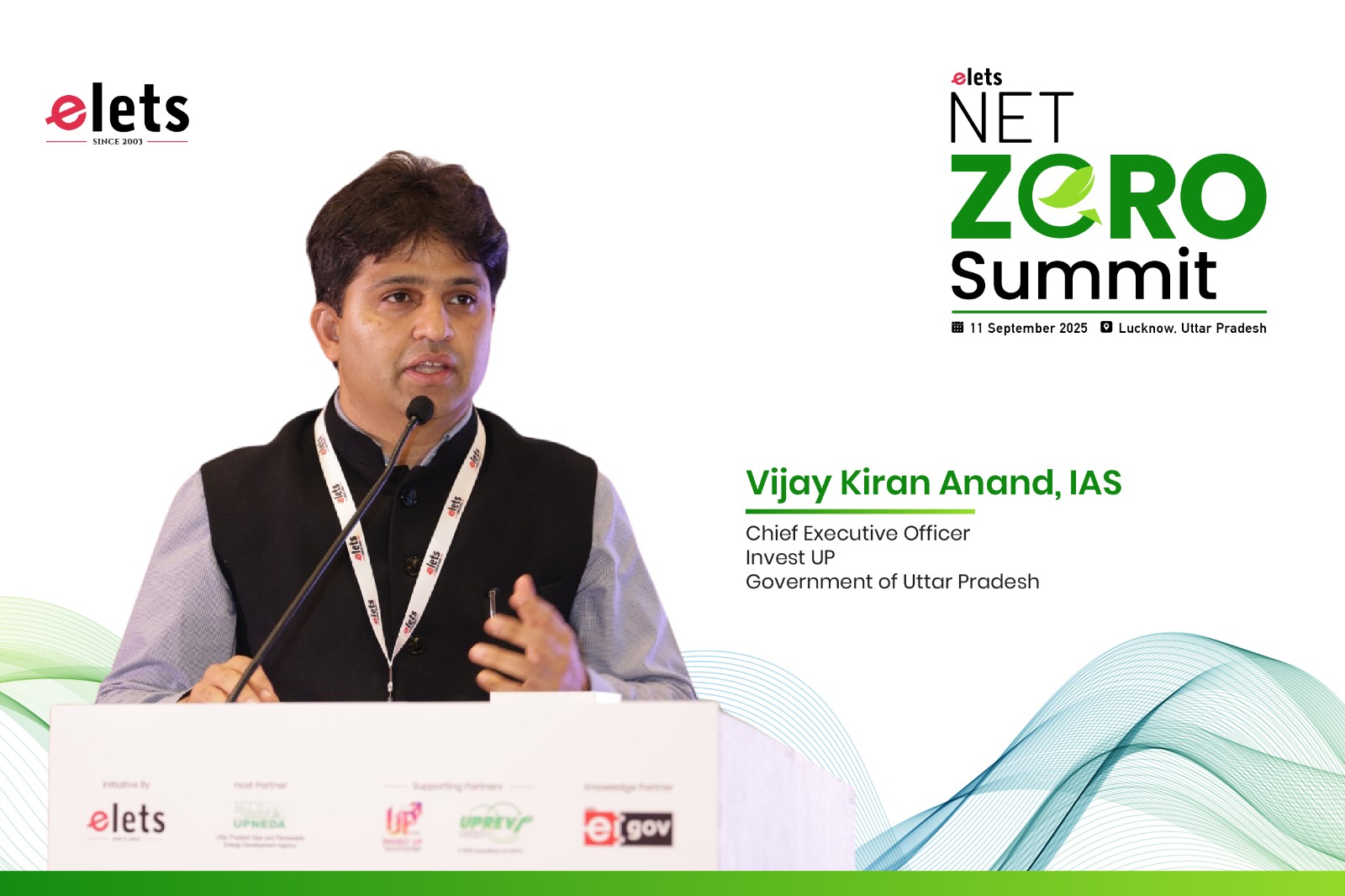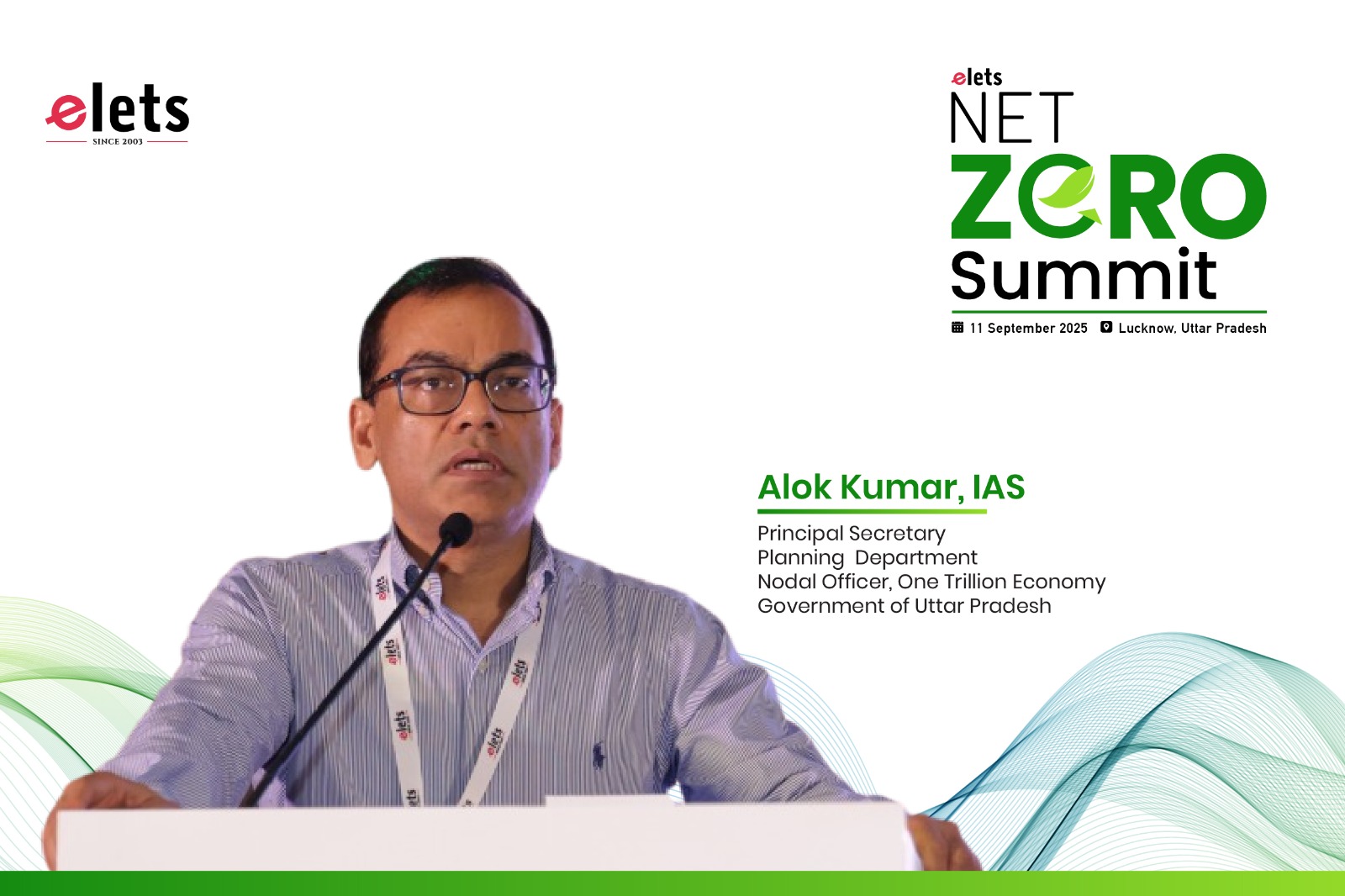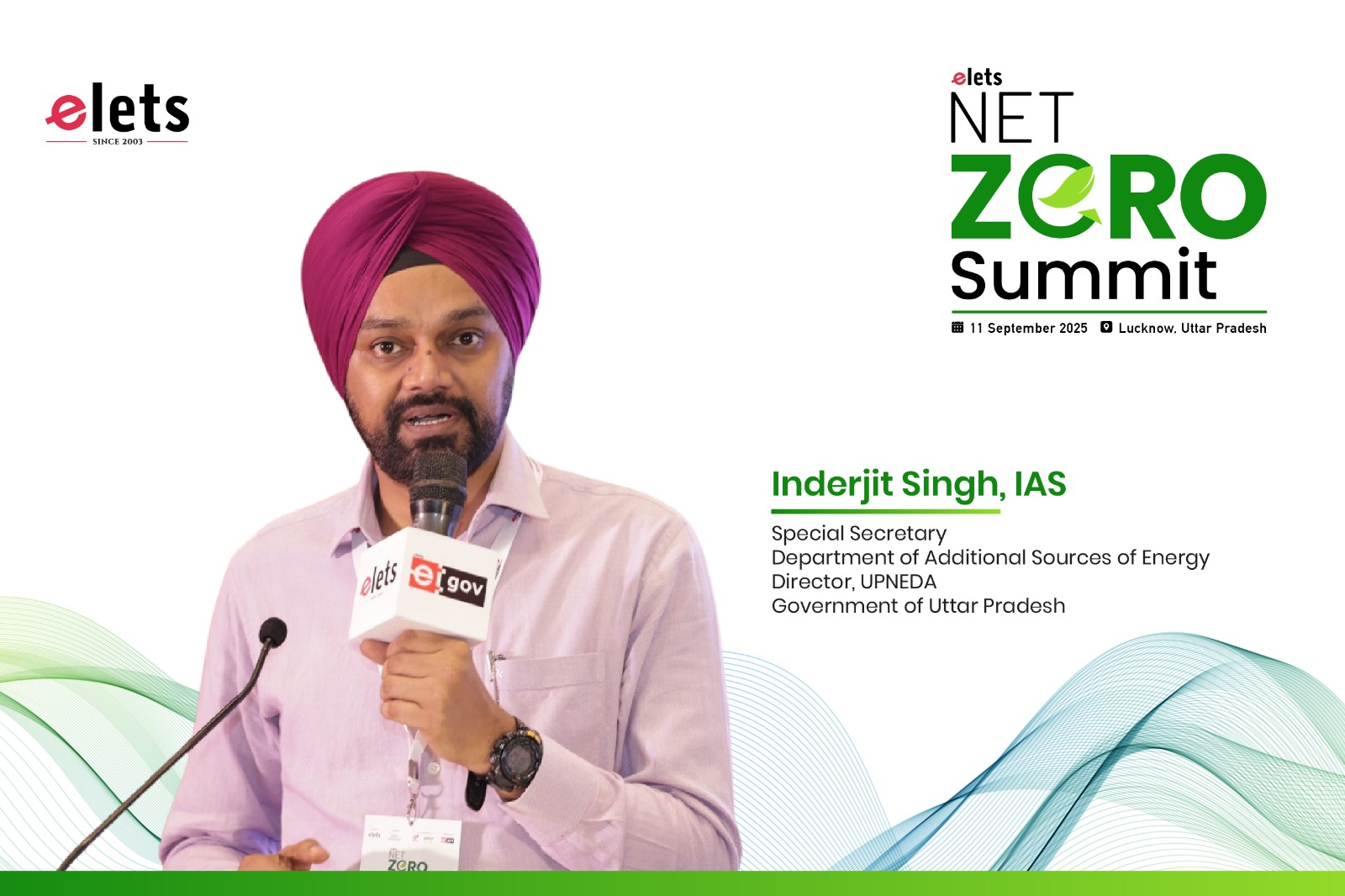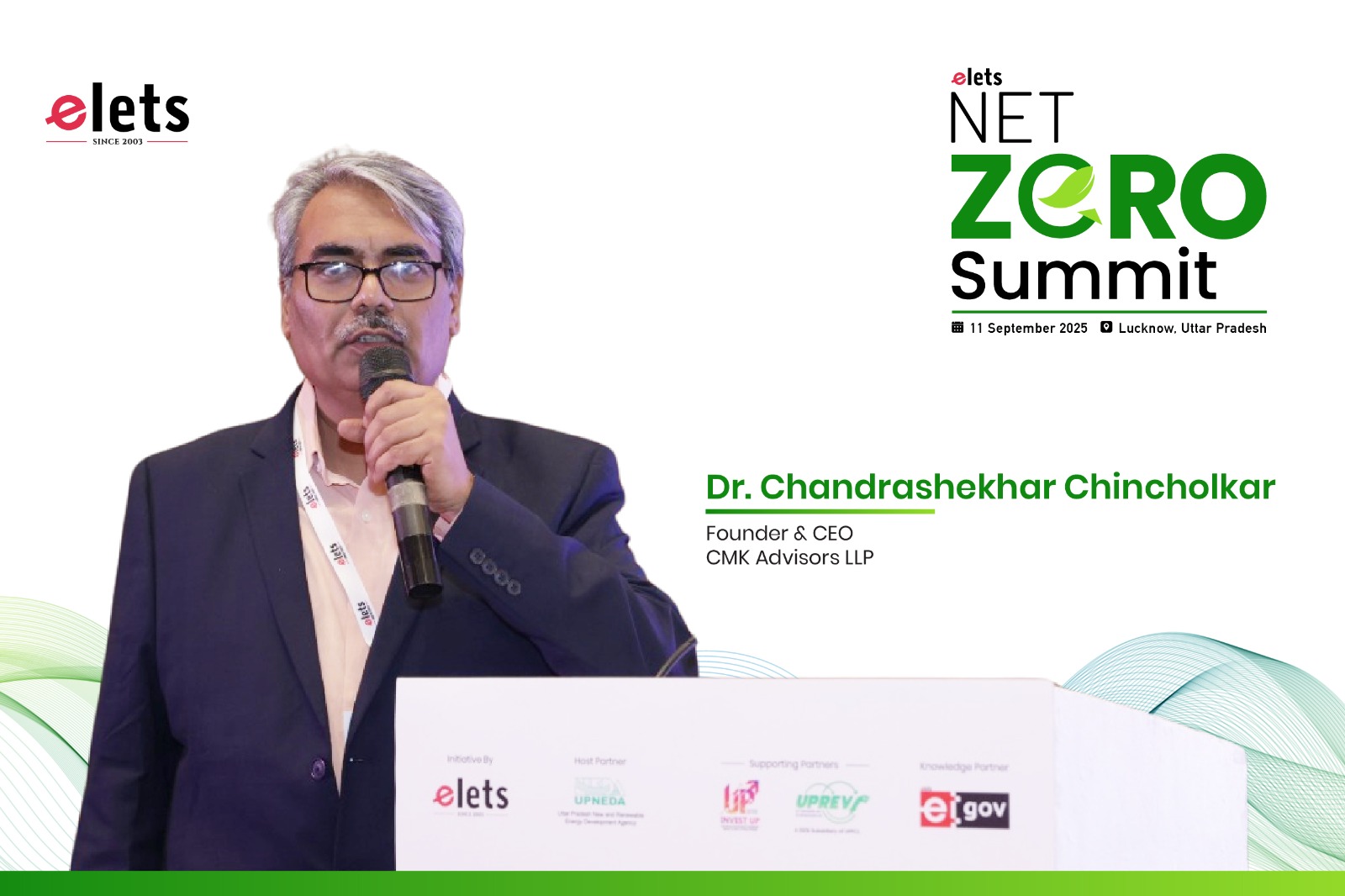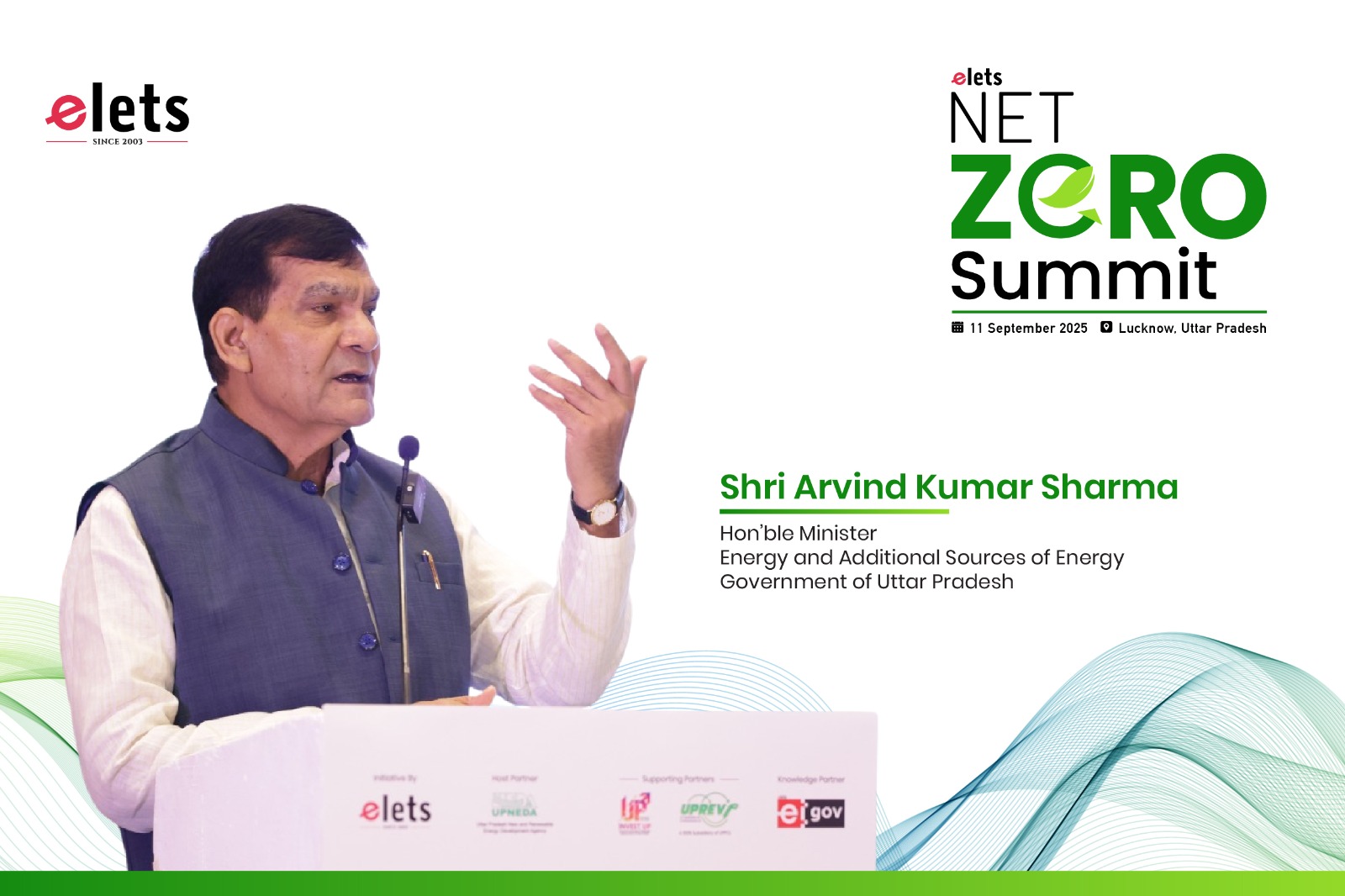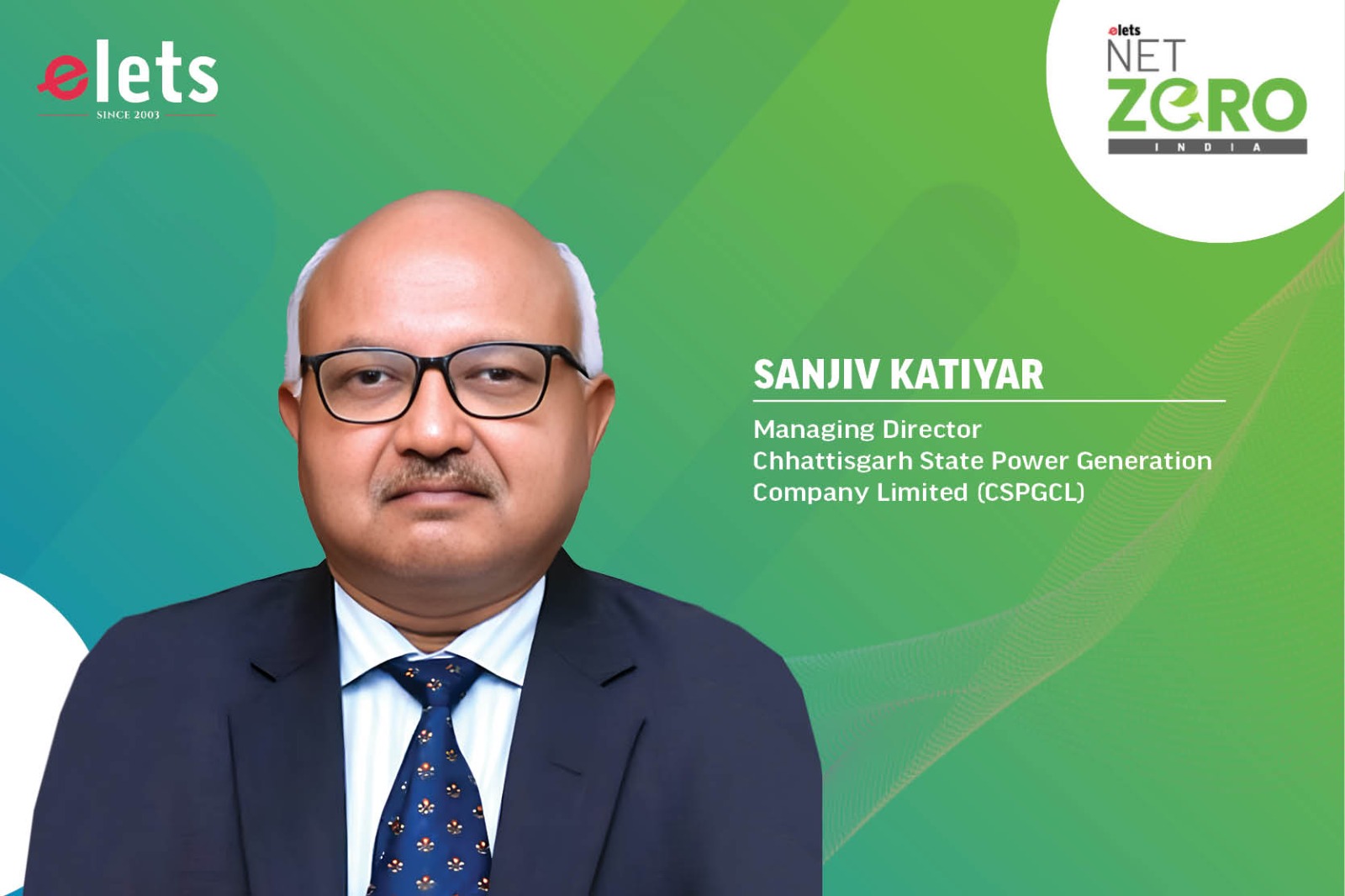
Chhattisgarh’s power sector is undergoing a transformative shift, aligning with India’s commitment to 100% renewable energy by 2070. CSPGCL is expanding its energy mix with solar, hydropower, and pumped storage projects, targeting 50% renewable energy by 2047. “With record-breaking operational efficiency and strategic investments, the state is set to become a key player in India’s sustainable energy landscape”, expresses Sanjiv Katiyar, Managing Director of Chhattisgarh State Power Generation Company Limited (CSPGCL) in an exclusive interaction with Mayank Thakur of Elets News Network (ENN).
What is your perspective on the current state of the power sector in Chhattisgarh?
The power generation sector is undergoing a transformative phase. The latest trends indicate a pronounced shift towards renewable energy sources. As we witness a global push for sustainability and decarbonization, our industry is aligning with these imperatives. There is a growing emphasis on solar, wind, biomass, and the emerging potential of green energy. India is committed to achieving 100% renewable energy by 2070. These renewable sources are not just alternatives but are becoming central to our energy strategies.
Chhattisgarh is also following this transition, with a target to meet 50% of its total energy requirement through renewable energy by 2047. However, due to negligible wind energy potential in the state, greater emphasis is being placed on solar and hydropower, particularly pumped storage systems. Please give us an overview of CSPGCL’s existing capacity and operations.
Chhattisgarh State Power Generation Company Limited (CSPGCL) is currently operating 2,978 MW capacity powergenerating plants, comprising:
Thermal Stations
- Hasdeo Thermal Power Station – 4×210 MW (1983–1986)
- Korba West TPS Extension – 1×500 MW (2013)
- Dr. Shyama Prasad Mukherjee Thermal Power Station Korba East – 2×250 MW (2006–2007)
- Atal Bihari Vajpayee Thermal Power Station, Marwa – 2×500 MW (2016)
Hydel Stations
- Hasdeo Bango Hydel Power Station – 3×40 MW (1994–1995)
- Gangrel Hydel Power Station – 4×2.5 MW (2004–2005)
- Sikasher Hydel Power Station – 2×3.5 MW (2006)
- Mini Micro Hydel Power Station, Korba West – 2×850 KW (2003, 2009) (operates on the return line of the cooling water outlet)
Coal Mine
CSPGCL has been allotted the Gare Palma–III Coal Mine in Raigarh District, with an annual production capacity of 5 million MT of coal. This mine is dedicated to 2×500 MW Atal Bihari Vajpayee Thermal Power Station, Marwa, which has been operational since 2018.
What have been the key operational highlights of CSPGCL in the last one year or so?
CSPGCL has always emphasized efficient power generation at a reasonable price. Through effective maintenance planning, spare parts management, and the timely completion of annual overhauls, operational efficiency has improved. This has resulted in a better Plant Load Factor (PLF), significant savings in secondary oil consumption, and a reduction in auxiliary power consumption.
During the financial year 2023-24, CSPGCL achieved a Plant Load Factor (PLF) of 84.45%, securing first position among all state-sector power utilities in India, as per the Central Electricity Authority (CEA) report.
- DSPM Thermal Power Station (2×250 MW) achieved a PLF of 92.73%, ranking third among all Central, State, and Private Sector Power Stations.
- The specific oil consumption was recorded at 0.285 ml/ kWh, the lowest ever.
- Auxiliary power consumption stood at 6.92%.
- CSPGCL’s Gare Palma-III Coal Mine was awarded four first prizes by the Director General of Mine Safety (DGMS) for 2023.
How has the financial performance of CSPGCL been?
Regarding the financial performance of CSPGCL, it is noteworthy that the annual turnover of CSPGCL stood at ₹7,500 crore, with a profit before tax of ₹881 crore, marking the highest recorded so far.
What are the noteworthy initiatives of CSPGCL in emission control, fly ash management, etc.?
CSPGCL is highly committed to environmental compliance. The company ensures that emissions remain within the norms prescribed by the Ministry of Environment and the National Green Tribunal. To further reduce emissions, various measures are being implemented, including the installation of Flue Gas Desulfurization (FGD) units, modified coal burners, and coal additives for improved combustion efficiency.
Regarding fly ash management, CSPGCL is dedicated to achieving 100% ash utilization. Currently, fly ash is being effectively used in NHAI projects, abandoned mines, low-lying area filling, brick manufacturing, and cement plants.
CSPGCL has also prioritized massive plantation drives for a sustainable environment. Tree plantations, conducted through Chhattisgarh Rajya Van Vikas Nigam, are secured with fencing and maintained for three to five years, ensuring a 90% survival rate. Additionally, effluent water is treated at Effluent Treatment Plants (ETPs), while sewage water undergoes processing at Sewage Treatment Plants (STPs) both in the township and the plant.
What are the key challenges faced by CSPGCL, and how are they being addressed?
Despite promising growth trends, CSPGCL faces several key challenges:
- Reducing Carbon Emissions: A major concern requiring advanced technology adoption and policy support to ensure sustainability.
- Renewable Energy Integration: The incorporation of renewable energy into the power grid demands technological innovations to maintain grid stability.
- Investment and Policy Support: Transitioning to sustainable energy necessitates significant investments and government backing.
Sector-Specific Challenges:
- Solar Energy: Availability of power from 4–5 PM to 9 AM remains a challenge, necessitating energy storage
solutions. Battery storage, however, has cost and import dependency limitations. - Flexible Operation of Thermal Power Plants: Requires redesigning operational practices to achieve the necessary ramp rate for grid stability when integrating renewable energy.
- Hydrogen Energy: Currently high-cost (₹300–₹400 per kg), with significant energy and water consumption. Additionally, hydrogen electrolysis, storage, and transport depend on imported technology.
- Pumped Storage Hydropower: Faces long gestation periods (6–7 years) and import technology dependencies.
Also Read :- India’s green hydrogen push 2030 vision & challenges
What are CSPGCL’s future plans? What is the planned capital expenditure for the next three to four years?
To meet future energy demand, CSPGCL is focusing on a diverse energy mix, including thermal, pumped storage hydropower, and solar power.
Key Upcoming Projects:
- 2×660 MW Supercritical Thermal Power Project at Korba West
- Bids invited, estimated cost: ₹12,915 crore.
- 1×660 MW Supercritical Thermal Power Extension Unit at AVBTPS, Marwa – DPR preparation in the final stage.
- 30 MW Solar Power Project – To be installed on an abandoned ash dyke, DPR completed.
- Five Pumped Storage Hydropower Projects (Total Capacity: 7,300 MW) have been identified and are being developed
- 800 MW Hasdeo Bango Pumped Storage Project (Korba District) – TOR received, DPR in progress.
- 1,200 MW Sikasar Pumped Storage Project (Gariaband District) – NTPC interested in joint venture development.
- 2,100 MW Rouni Pumped Storage Project (Jashpur District) – THDC has expressed interest in the joint venture.
- 1,400 MW Dangari Pumped Storage Project (Jashpur District) – THDC has expressed interest in the joint venture.
- 1,800 MW Kothpali Pumped Storage Project (Balrampur District) – SJVN interested in joint venture development.
What is your outlook for Chhattisgarh’s power sector in the near to medium term?
Chhattisgarh is rich in minerals, with abundant reserves of coal, iron ore, and other natural resources. Coal-based thermal power stations, operated by CSPGCL, NTPC, and private producers, remain the backbone of energy production.
However, there is a paradigm shift towards renewable energy, with an emphasis on solar energy expansion, floating solar projects, and pumped storage hydropower development.
The state aims to increase renewable energy’s share to 50% by 2046–47 and achieve 100% clean energy by 2070.
Continuous upgradation of infrastructure and adoption of new, efficient technologies will be crucial in meeting rising electricity demand while maintaining high reliability and sustainability standards.
Be a part of Elets Collaborative Initiatives. Join Us for Upcoming Events and explore business opportunities. Like us on Facebook , connect with us on LinkedIn and follow us on Twitter, Instagram.
"Exciting news! Elets technomedia is now on WhatsApp Channels Subscribe today by clicking the link and stay updated with the latest insights!" Click here!




